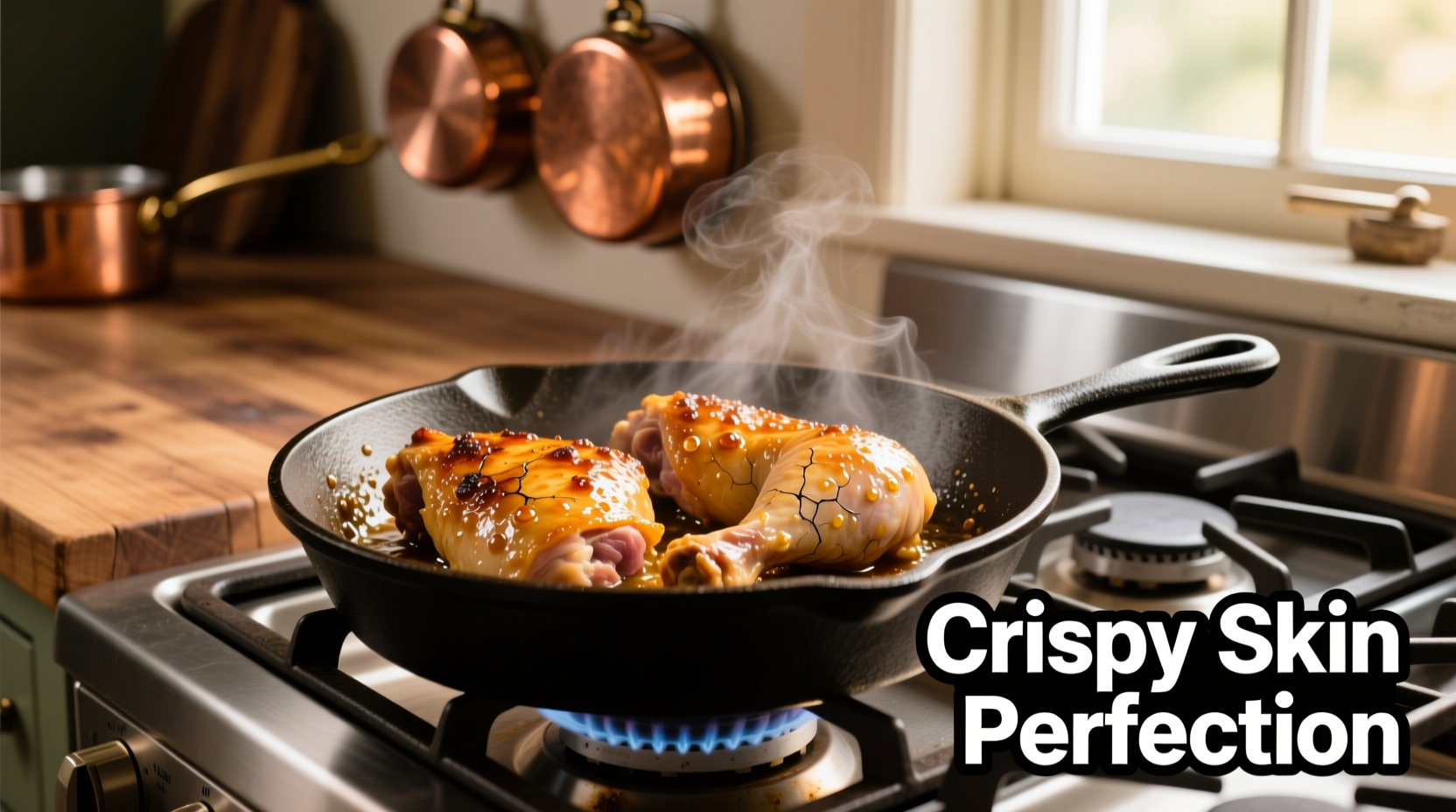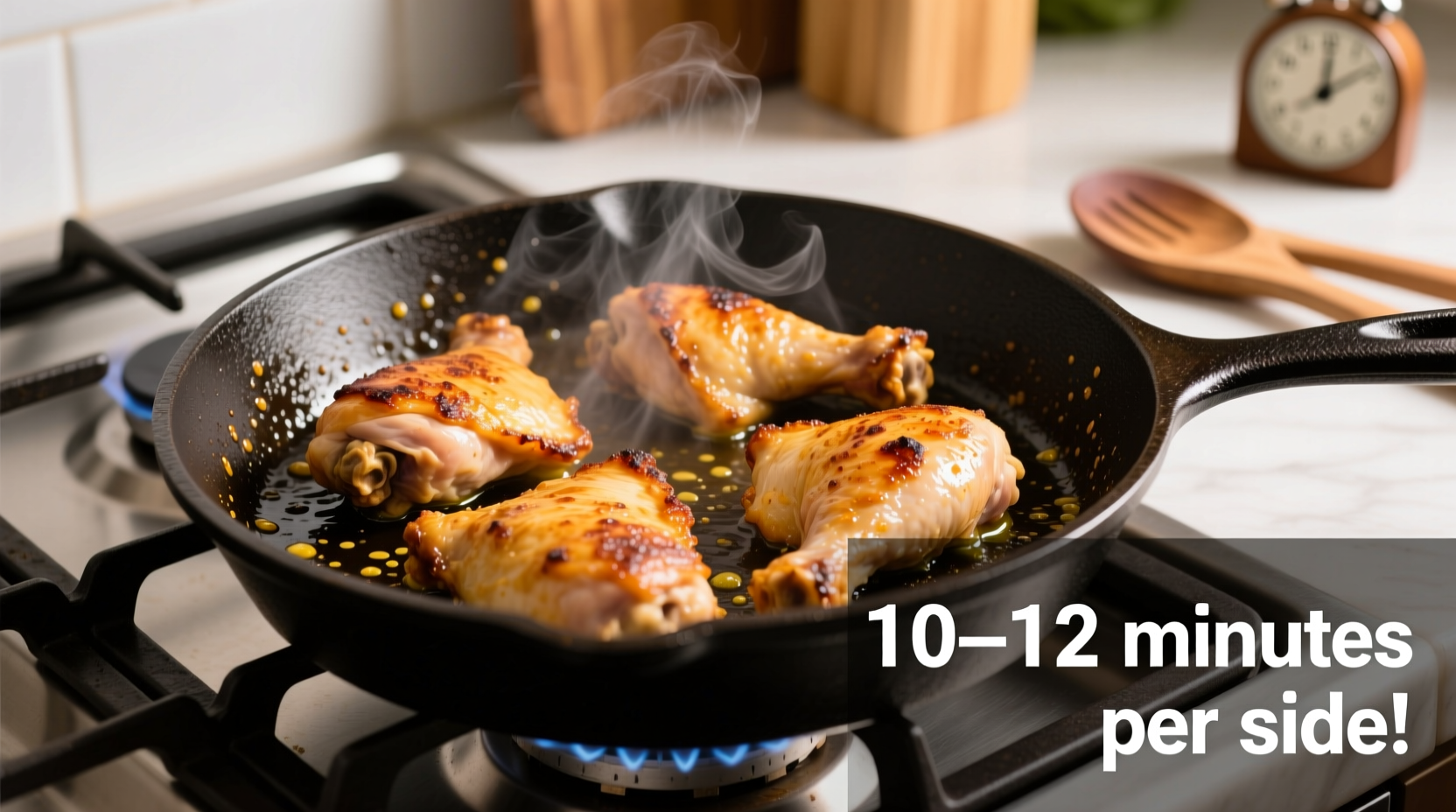Cook chicken thighs on stove for 15-20 minutes total (8-10 minutes per side) over medium-high heat until they reach 165°F internal temperature. Bone-in thighs need 18-20 minutes while boneless require 12-15 minutes. Always use a meat thermometer for food safety.
Perfectly cooked chicken thighs should be juicy with crispy skin and no pink near the bone. This stove-top method delivers restaurant-quality results without firing up your oven. Whether you're meal prepping or making tonight's dinner, mastering this technique ensures flavorful, safe chicken every time.
The Complete Guide to Stove-Top Chicken Thighs
Cooking chicken thighs on the stove is one of the most reliable methods for achieving tender, flavorful results with minimal equipment. Unlike breasts, thighs are forgiving and become more succulent when cooked properly. This guide provides precise timing, temperature control, and food safety information based on USDA standards and professional chef techniques.
| Thigh Type | Total Cooking Time | First Side | Second Side | Internal Temp |
|---|---|---|---|---|
| Bone-in, skin-on | 18-20 minutes | 9-10 minutes | 9-10 minutes | 165°F (74°C) |
| Boneless, skin-on | 15-18 minutes | 8-9 minutes | 7-9 minutes | 165°F (74°C) |
| Boneless, skin-off | 12-15 minutes | 6-7 minutes | 6-8 minutes | 165°F (74°C) |
Source: USDA Food Safety and Inspection Service guidelines for poultry cooking temperatures (fsis.usda.gov/food-safety/chicken-from-farm-table)
Why Stove-Top Cooking Works Best for Chicken Thighs
Chicken thighs contain more fat and connective tissue than breasts, making them ideal for stove-top cooking. The direct heat creates a beautiful sear while rendering the skin crispy. Unlike oven methods that can dry out leaner cuts, thighs become more flavorful as their fat renders slowly.
Professional chefs prefer this method because it offers precise temperature control. You can adjust heat instantly if the skin browns too quickly or the meat isn't reaching proper temperature. This level of control is impossible with oven or grill methods.
Step-by-Step Cooking Process
Preparation (5 minutes)
- Pat thighs dry with paper towels (critical for crispy skin)
- Season generously with salt and pepper (and optional spices)
- Let sit at room temperature for 10-15 minutes before cooking
Cooking Sequence (15-20 minutes)
- Heat 1-2 tablespoons of oil in heavy skillet over medium-high heat (375°F)
- Place thighs skin-side down without crowding the pan
- Cook undisturbed for 8-10 minutes until skin is golden brown
- Flip thighs and cook 7-10 minutes more until internal temperature reaches 165°F
- Remove from heat and rest 5 minutes before serving

Avoiding Common Mistakes
Many home cooks make these critical errors when cooking chicken thighs on stove:
- Moving too soon: Wait until skin releases naturally from the pan (about 8 minutes)
- Overcrowding: Cook in batches if necessary to maintain proper heat
- Guessing doneness: Always use a digital thermometer—never rely on color alone
- Skipping rest time: Resting allows juices to redistribute for maximum tenderness
When Stove-Top Isn't Ideal: Context Boundaries
While stove-top cooking works exceptionally well for chicken thighs, certain situations call for alternative methods:
- Large gatherings: Oven roasting handles multiple portions more efficiently
- Extra-crispy skin desired: Finish under broiler for ultimate crispness
- Marinated thighs: Grill method prevents marinade burning in pan
- Meal prep batches: Slow cooker yields consistently tender results for large quantities
For weeknight dinners serving 1-4 people, stove-top remains the superior method for chicken thighs due to speed, control, and superior texture development.
Pro Tips for Restaurant-Quality Results
- Temperature control: Adjust heat if skin browns too quickly before reaching proper internal temperature
- Butter basting: During final 5 minutes, add butter, garlic, and herbs to pan and spoon over thighs
- Salt timing: Salt thighs 1 hour before cooking for deeper flavor penetration
- Acid finish: A splash of lemon juice or vinegar after resting brightens rich flavors
Food Safety Essentials
The USDA Food Safety and Inspection Service mandates that all poultry reach 165°F internal temperature to eliminate harmful bacteria like salmonella. This temperature must be verified using a digital thermometer inserted into the thickest part of the thigh, avoiding the bone.
Never wash raw chicken before cooking—this spreads bacteria through water splatter. Instead, focus on proper hand washing and sanitizing surfaces that contact raw poultry. Store raw chicken on the bottom shelf of your refrigerator to prevent cross-contamination.
Troubleshooting Guide
| Problem | Solution |
|---|---|
| Skin sticking to pan | Ensure pan is properly preheated and chicken is completely dry |
| Exterior burning before interior cooks | Reduce heat and cover pan for final 3-5 minutes |
| Uneven cooking | Arrange thicker parts toward center of pan where heat is more intense |
| Dry meat despite proper temperature | Try brining thighs for 30-60 minutes before cooking |
Final Thoughts
Mastering stove-top chicken thighs gives you a versatile, reliable cooking technique that delivers perfect results consistently. The 15-20 minute timeframe makes this ideal for weeknight dinners, while the forgiving nature of thighs means minor timing variations won't ruin your meal. Remember the golden rule: always verify with a thermometer, never guess. With these techniques, you'll achieve crispy-skinned, juicy chicken thighs that rival restaurant quality every time.











 浙公网安备
33010002000092号
浙公网安备
33010002000092号 浙B2-20120091-4
浙B2-20120091-4